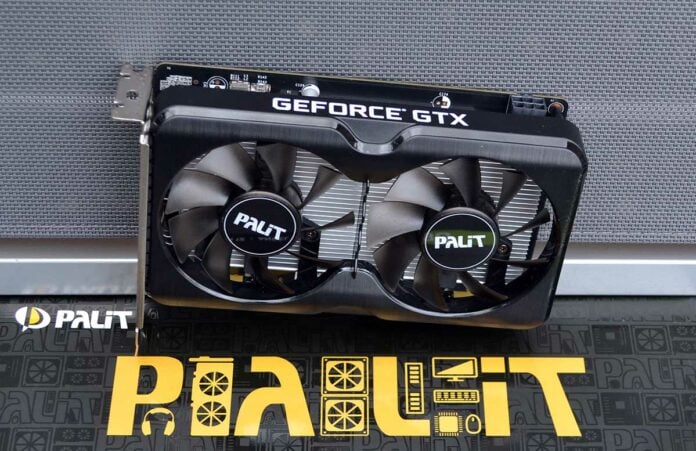PC graphics cards becoming widely available at or near manufacturer recommended pricing is great news for gamers. Though many are pausing buying decisions until Nvidia, AMD and Intel launch advanced solutions in autumn, all indications are best graphics cards will come first.
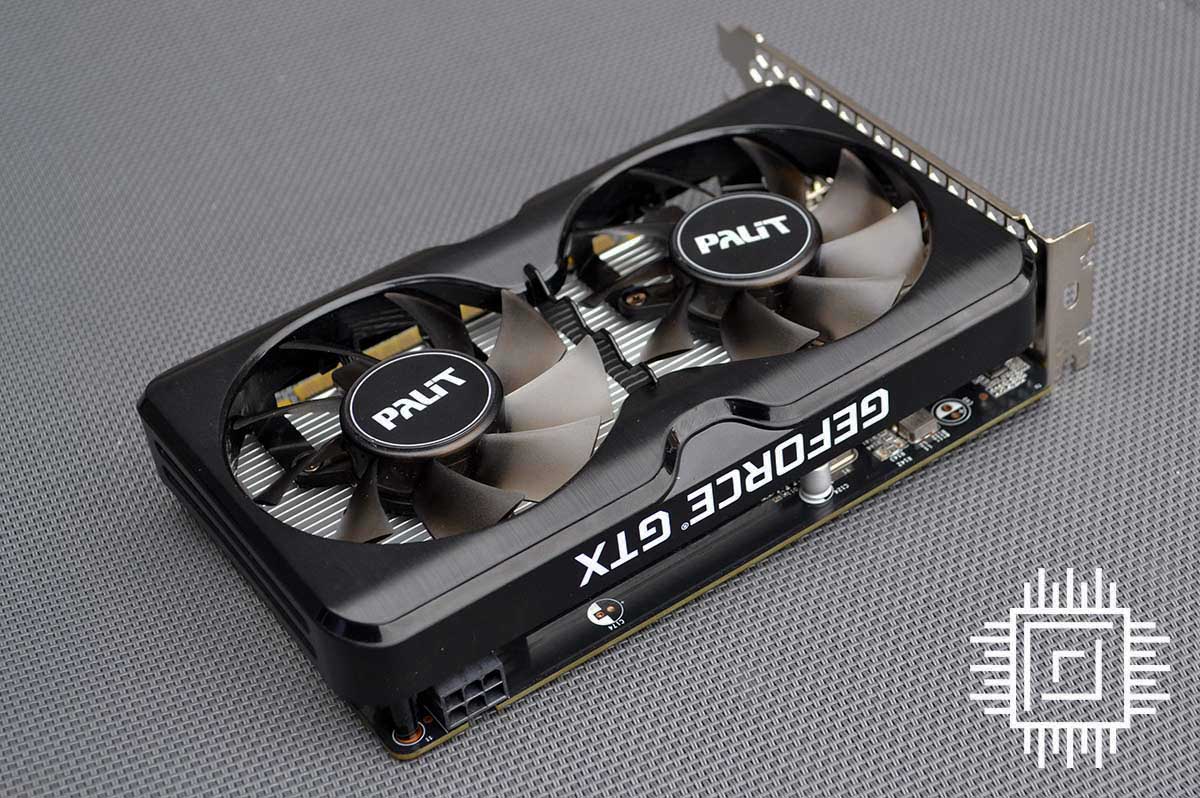
Palit GeForce GTX 1630 Dual 4GB
£149
Pros
- Small form factor
- Overclocks well
- Reasonable for eSports
Cons
- Hamstrung performance
- Overpriced by 50 per cent
- 6-pin power connector
- Barely better than IGP
- 4GB framebuffer
Club386 may earn an affiliate commission when you purchase products through links on our site.
How we test and review products.
Looking at the mainstream end of the market and with due knowledge of the waterfall effect of upcoming GPUs, Nvidia spies opportunity to immediately introduce another GPU in the sub-£150 space. Said card is GeForce GTX 1630 4GB, designed for smooth gameplay in popular games at an ubiquitous FHD resolution. Let’s cut to the chase, shall we?
Club386 Table of Doom™
| GPU | GTX 1650 | GTX 1630 | GTX 1060 |
|---|---|---|---|
| Launch date | April 2019 | June 2022 | July 2016 |
| Codename | TU117 | TU117 | GP106 |
| Architecture | Turing | Turing | Pascal |
| Interface | PCIe 3.0 x16 | PCIe 3.0 x16 | PCIe 3.0 x16 |
| Process (nm) | 12 | 12 | 14 |
| Transistors (bn) | 4.7 | 4.7 | 4.4 |
| Die Size (mm²) | 200 | 200 | 200 |
| Processors | 896 | 512 | 1,280 |
| ROPs | 32 | 16 | 48 |
| RT Cores | – | – | – |
| Tensor Cores | – | – | – |
| Boost Clock (MHz) | 1,665/1,590 | 1,785 | 1,708 |
| Peak GFLOPs | 2,984/2,849 | 1,828 | 4,372 |
| Memory Type | GDDR5/6 | GDDR6 | GDDR5 |
| Memory Size (GB) | 4 | 4 | 6 |
| Memory Clock (MT/s) | 8,000/12,000 | 12,000 | 8,000 |
| Memory Width (bits) | 128 | 64 | 192 |
| Memory Bandwidth (GB/s) | 128/192 | 96 | 192 |
| Power Connector (pin) | 6 | 6 | 6 |
| Board Power (watts) | 75 | 75 | 120 |
| Launch MSRP (USD) | 149 | 149 | 249 |
GeForce GTX 1630 Analysis
Belonging to the GTX 16-series family first released over three years ago, GTX 1630 is very much a throwback. We know this because Nvidia is using the 12nm TU117 die previously seen on April 2019’s GeForce GTX 1650. That particular card was populated with 896 Cuda cores, 56 texture units, 32 ROPs and connected to either GDDR5 memory running at 8GT/s, or a year later, GDDR6 operating at 12GT/s. Both shared a 128-bus from memory to card. Mainstream cards for the mainstream market.
Though using the same 4.7bn transistor die occupying 200mm² die space, GTX 1630 is weaker in all respects. The TU117-150 silicon drops core count to 512 – representing a 43 per cent reduction from GTX 1650, and texture units and ROPs fall to 32 and 16, respectively. The performance hammer also comes down on memory, where GTX 1630 uses a 64-bit bus allied to GDDR6 running at 12GT/s. All told, there’s only 96GB/s on tap.
These manifest changes translate to a GPU that’s primed to operate in the FHD firmament only, likely with medium-quality settings, and isn’t too far removed from performance obtained by the latest baked-in IGPs. Nvidia sees this as an entry-level card for anyone wanting to upgrade from basic IGPs typically found in Intel chips, of which there are millions in the field.
Being a GTX model it misses out on specific RT and Tensor cores present in the newer, more powerful RTX range. That’s a sensible move on Nvidia’s part as the intrinsic firepower of this GPU is not enough to do those two technologies justice.
Appreciating the more potent GTX 1650 launched three years ago armed with a £149 fee, we’re surprised to see GTX 1630 pitched at the same level. Commentary suggests performance is more in line with a £99 price tag, especially in these days of plentiful stock and limited price gouging. Benchmarks will reveal all.
Palit GeForce GTX 1630 4GB Dual
You’d think Palit would take an existing heatsink-and-fan design – say the GTX 1650 Dual – and repurpose it in its entirety for GTX 1630. That doesn’t happen as the two cards share the same suffix but not the same cooler.
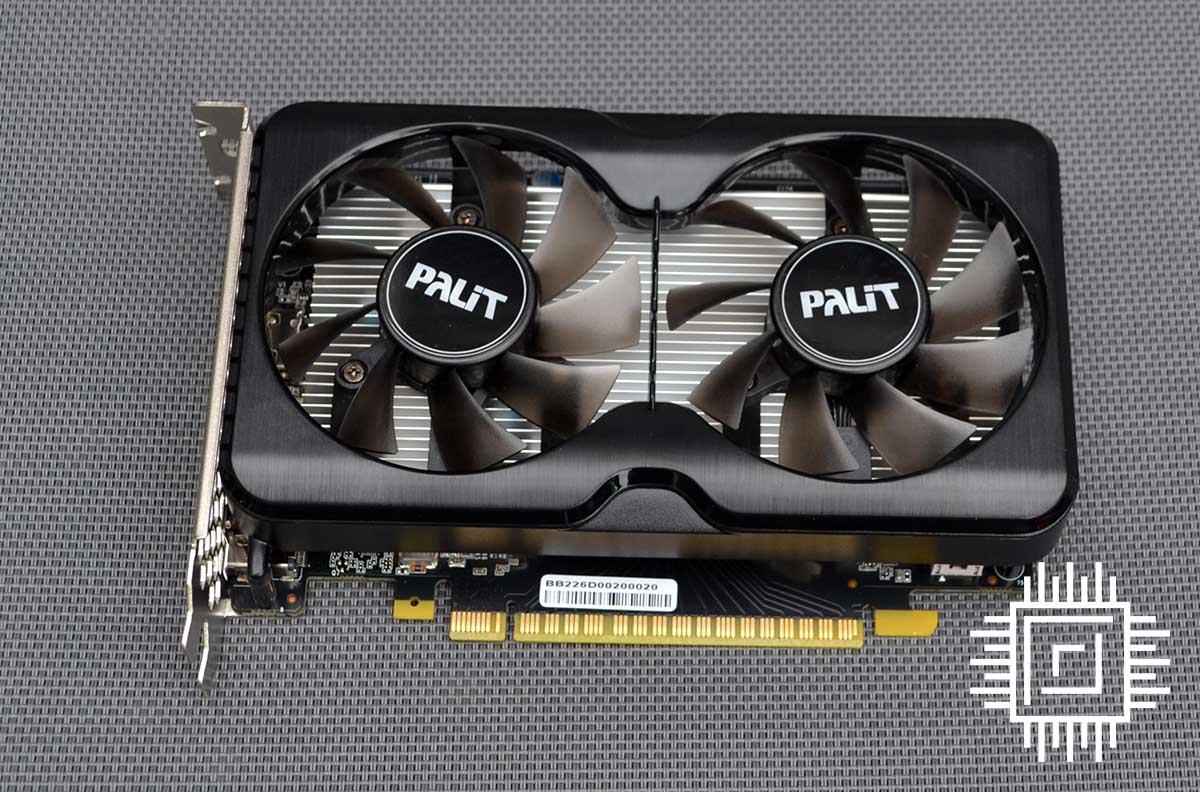
You see, GTX 1630 Dual’s cooler measures a Mini-ITX-accommodating 170mm long, 112mm tall and 40mm thick, whereas GTX 1650 chimes in at 170mm x 99mm x 40mm, even though both GPUs share a 75W TGP. What’s more, and somewhat strangely, Palit decides to add a 6-pin power connector on this lower-power model, which is conspicuous by its absence on GTX 1650.
Another change rests with GTX 1630 implementing a zero-fan idle mode, and our observations highlight a 55°C switch-on temperature. The simple metal heatsink, meanwhile, does away with heatpipes, relying instead on the cooling capabilities of a single finned block – intelligently also cooling VRMs – residing underneath two fans.
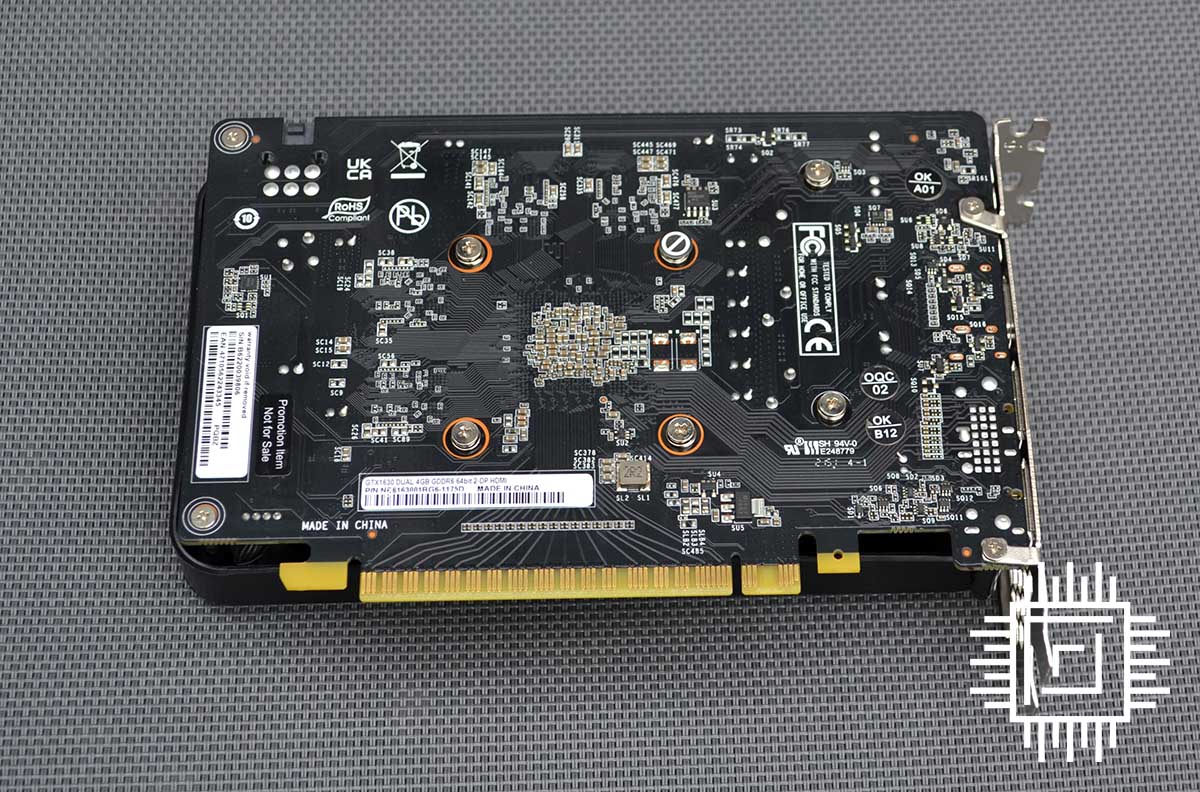
Palit clocks Dual at an Nvidia-matching 1,785MHz boost and also keeps 4GB of GDDR6 memory chugging along at 12GT/s. The card actually holds 1,860MHz across our titles. A Dual OC model is otherwise identical save for an 1,815MHz boost speed. Keeping costs in check, there is neither RGB nor extraneous extras such as a metal backplate.
Dual DisplayPort 1.4a and a single HDMI 2.0b drive up to three displays simultaneously, and that’s totally okay for a card of this ilk.
Performance
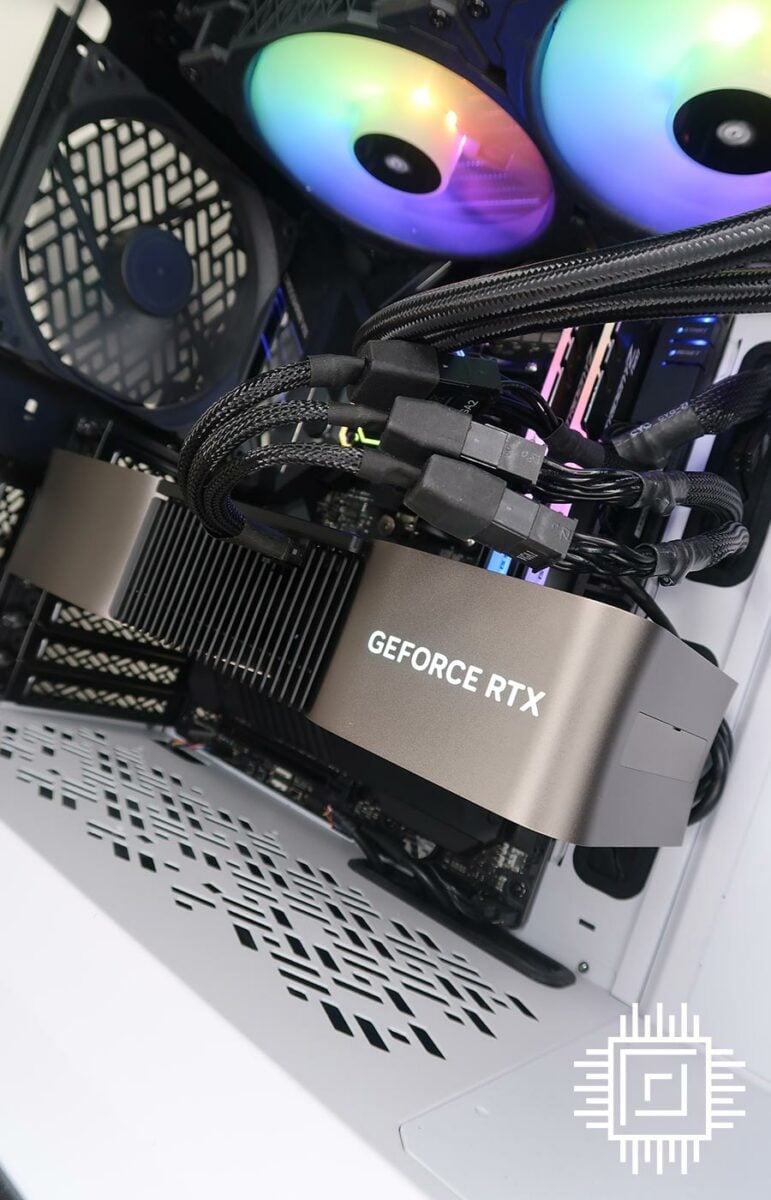
Our 5950X Test PCs
Club386 carefully chooses each component in a test bench to best suit the review at hand. When you view our benchmarks, you’re not just getting an opinion, but the results of rigorous testing carried out using hardware we trust.
Shop Club386 test platform components:
CPU: AMD Ryzen 9 5950X
Motherboard: Asus ROG X570 Crosshair VIII Formula
Cooler: Corsair Hydro Series H150i Pro RGB
Memory: 32GB G.Skill Trident Z Neo DDR4
Storage: 2TB Corsair MP600 SSD
PSU: be quiet! Straight Power 11 Platinum 1300W
Chassis: Fractal Design Define 7 Clear TG
Keeping matters relevant, we’re benchmarking Palit’s card against its immediate competitor, an AMD Radeon RX 6400 4GB from ASRock, using driver versions 516.59 and 22.5.2, respectively, on our Ryzen 9 5950X benchmarking system. Both cards ply the £150 bracket and make a case for being first upgrades from integrated graphics.

Not a great start. We know that an AMD Ryzen 7 5700G – featuring integrated Vega-class graphics and soon to be superseded by Ryzen chips housing RDNA 2 graphics smarts – returns a score of 1,593. It’s worrying for Nvidia that rival RX 6400 is able to produce 73 per cent higher numbers, while a card we don’t look upon too favourably, Radeon RX 6500 XT, available for around the same price as this pair, cranks out 5,548 marks.

We’ve had to lower settings to medium for the two cards to produce meaningful and consistent framerates, thus rendering results incomparable with previous testing.
Nevertheless, at FHD, AMD has a 36 per cent lead, which is significant considering the average and minimum framerates. We’d certainly add framerate-boosting technology from either camp to help matters along.

Are we being unfair by testing against triple-A titles that use advanced rendering engines? We’d argue no because of the £150 fee, but nevertheless, a run of CS: GO with very high-quality settings returns expectedly high framerates. The yawning chasm between GTX 1630 and RX 6400 is hard to ignore.

High-quality settings are actually too tough for either card. We run them to illustrate the point that GTX 1630 and RX 6400 need to be matched up to the game; GeForce Experience comes into its own here.

A great illustration of what happens when you take a popular game with a shallow graphics engine load and subject it to entry-level cards. AMD streaks ahead by offering 67 per cent more performance.

Forza Horizon 5 is coded wonderfully well. Looking good when set to high-quality settings and running reasonably smooth on both cards by never dipping below 30FPS, we wish all games were written this efficiently.

Matching games to cards, Gears Tactics can be run with ultra-quality settings. The same story ensues, that is, AMD beating up on Nvidia in this segment.

Having to tame only 75W is easy for the improved Dual cooler. As expected, it’s a quiet GPU.

Anything below 70°C is considered good, and both cards ace the test.

Bear in mind these numbers are evaluated as a complete system. Nothing much to choose between them.
Overclocking
We raised core frequency to 2,000MHz and memory to an effective 13.4GT/s. Taken as an average over our games, framerate benefit is 9.5 per cent. Handy, of course, but as a proof point, Assassin’s Creed Valhalla’s performance increases from 33FPS to only 36FPS.
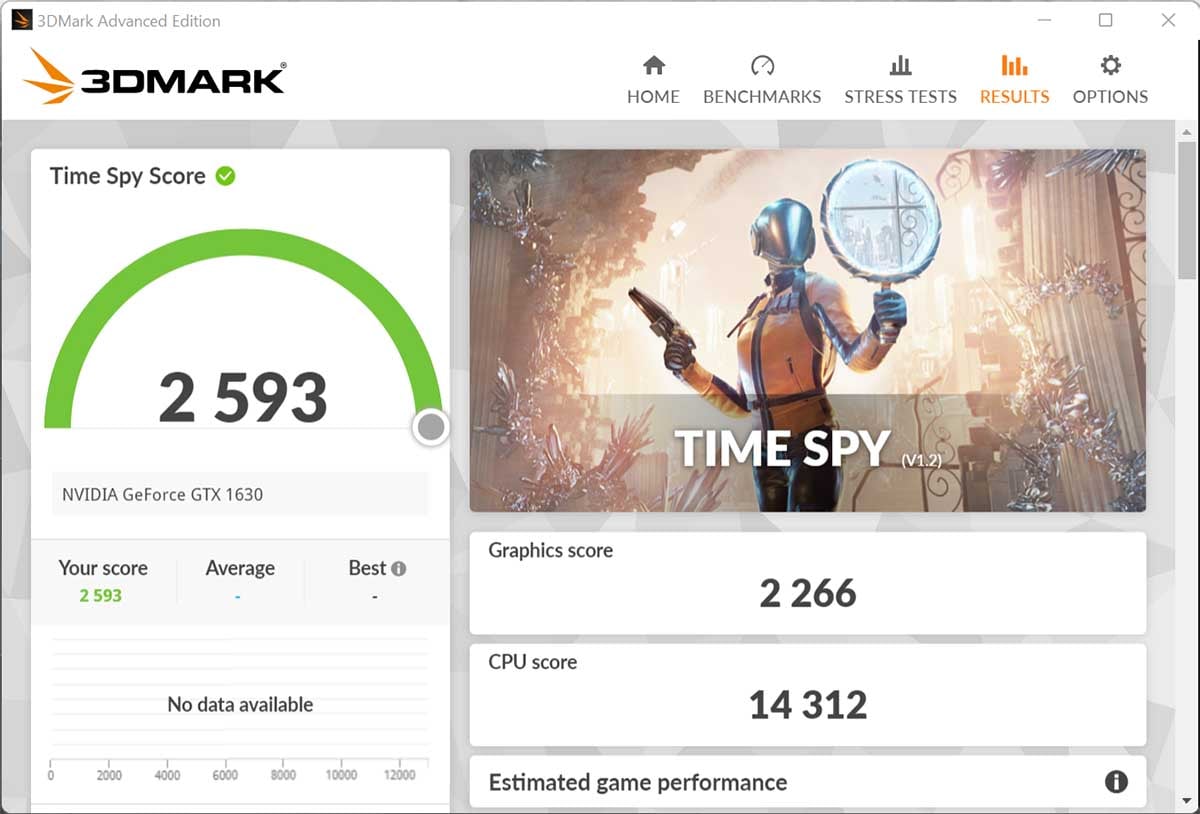
Conclusion
It’s curious why Nvidia would want to resurrect a three-year-old mainstream GPU and then castrate it further by lopping off cores and memory bus width. GeForce GTX 1630 is the culmination of this vision, and truth be told, it makes little sense, particularly at the £150 price point.
Comfortably outdistanced by the anaemic Radeon RX 6400, sometimes to the tune of 70 per cent, Nvidia’s latest card is a relatively small step up from desktop integrated graphics and may struggle to match the latest IGPs on mobile.
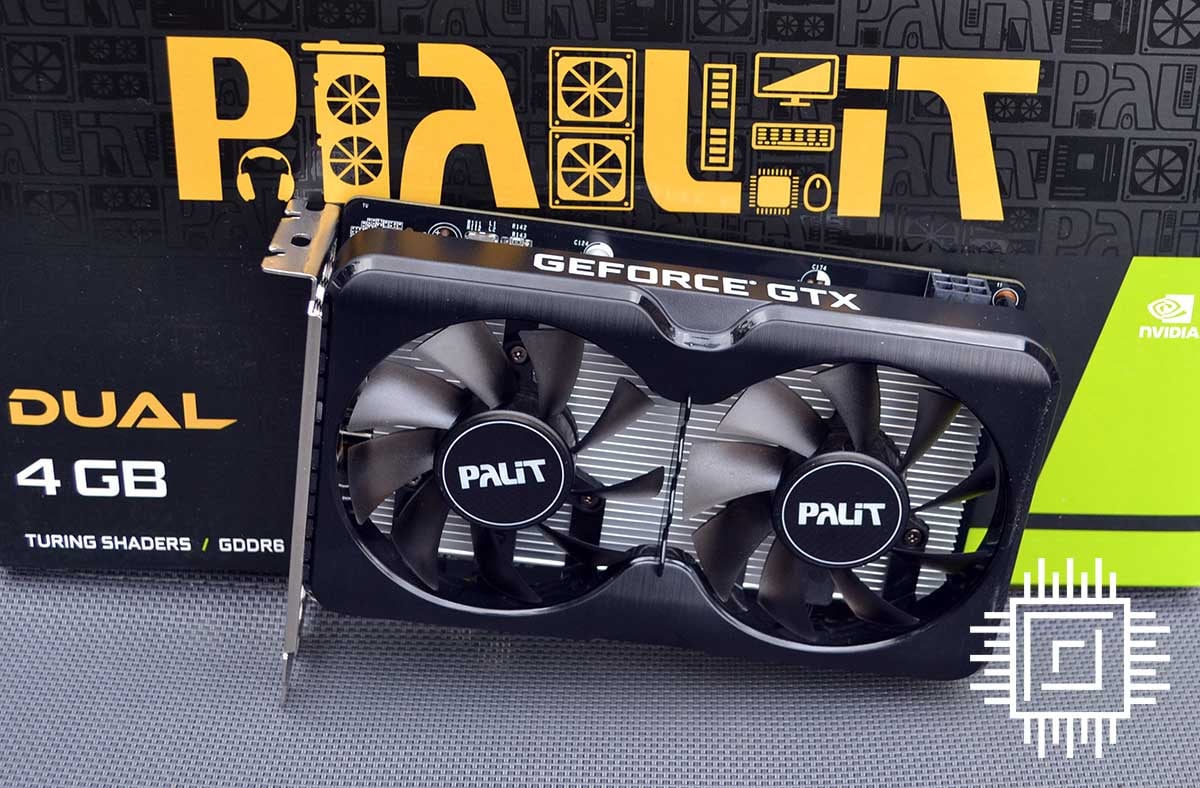
Appreciating these misgivings, Nvidia ought to enable partners to build cards costing less than £100, thereby putting value to the fore. That hasn’t happened, putting AIBs in an awfully tight spot.
Palit’s Dual interpretation is fine when considered in isolation; the cooler does a good job, dimensions are petite enough, but we question the need for an auxiliary power connector.
Verdict: An overpriced card that ought to be confined to 2019, GTX 1630 leaves a lot to be desired.


